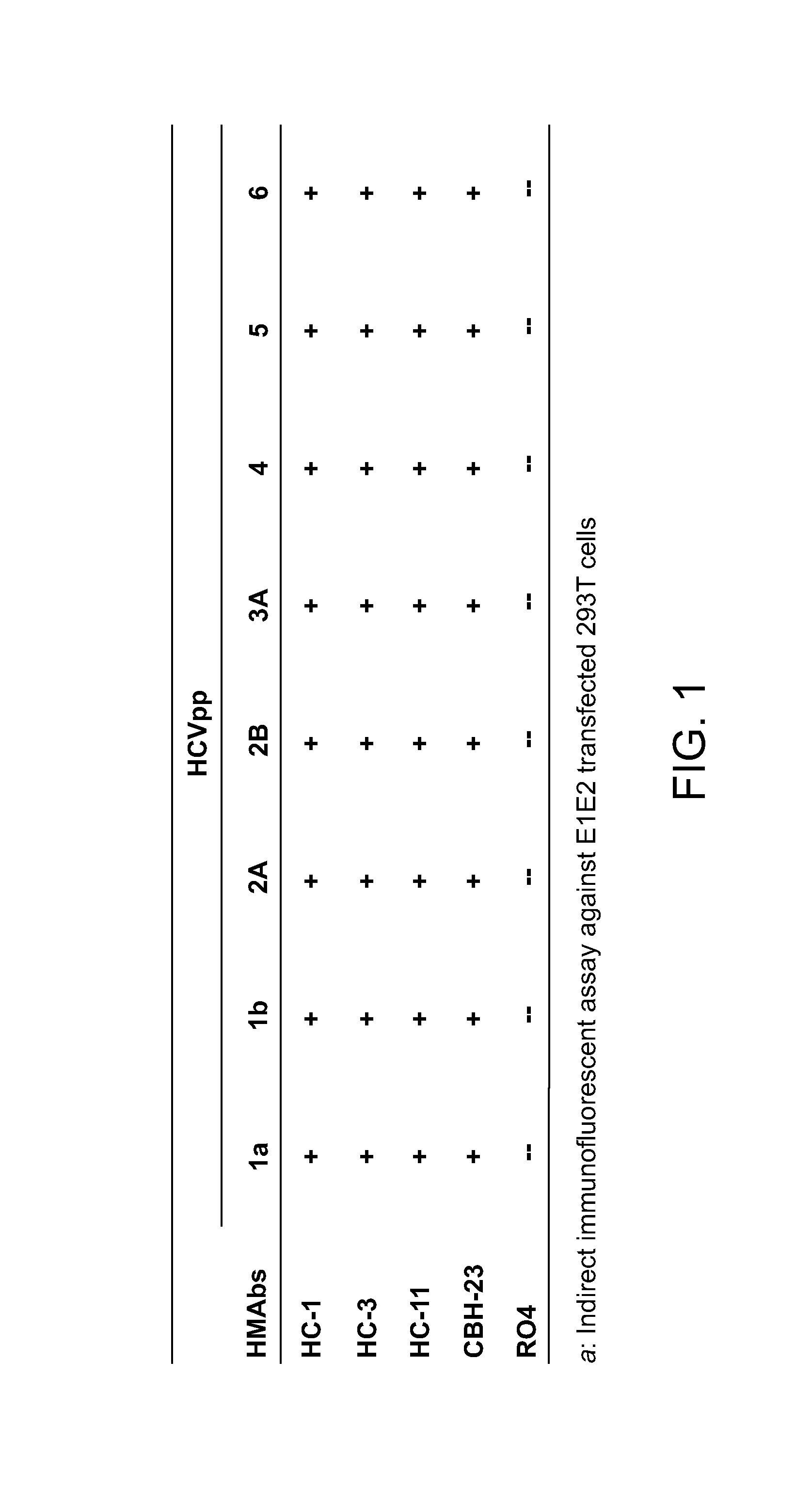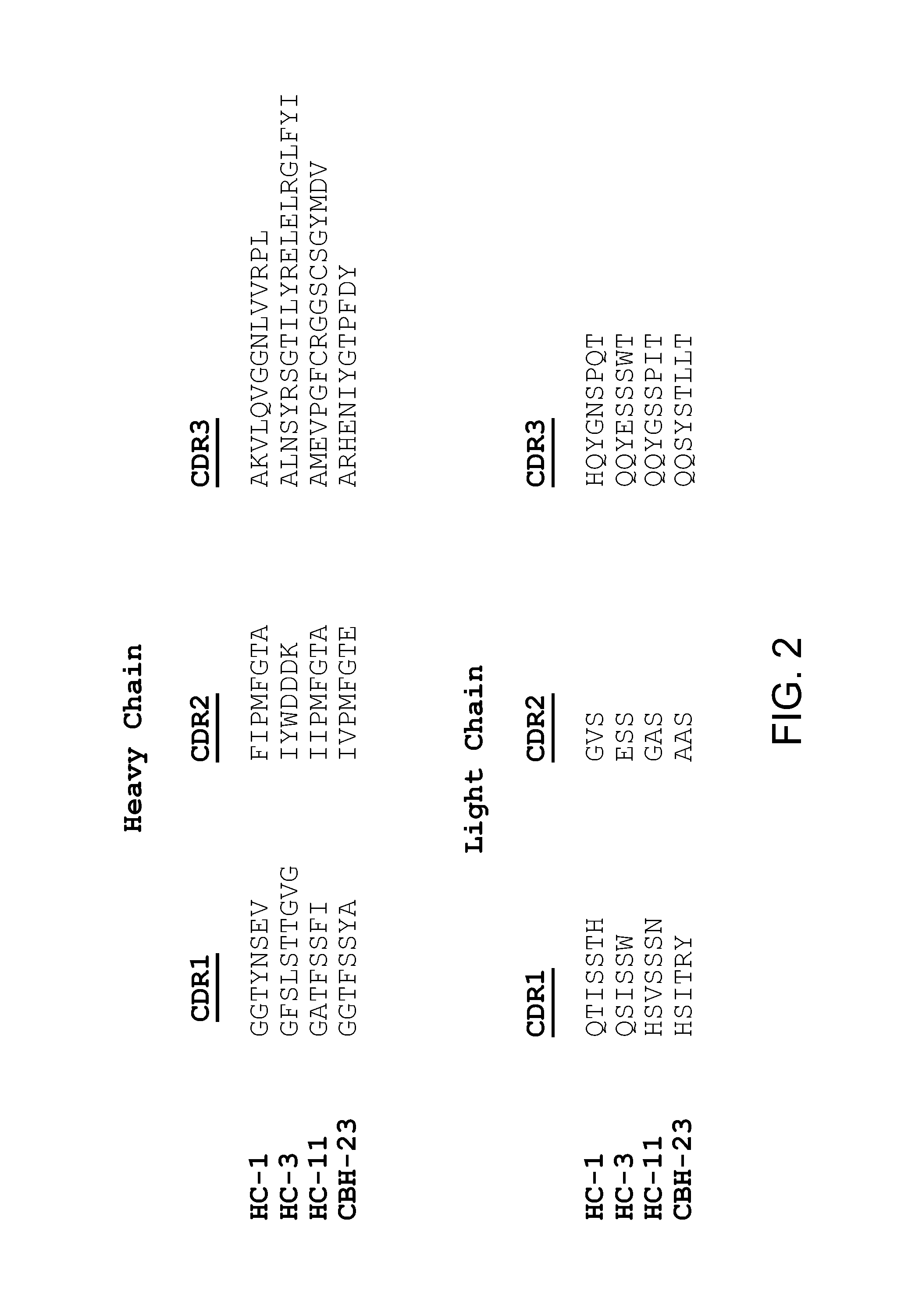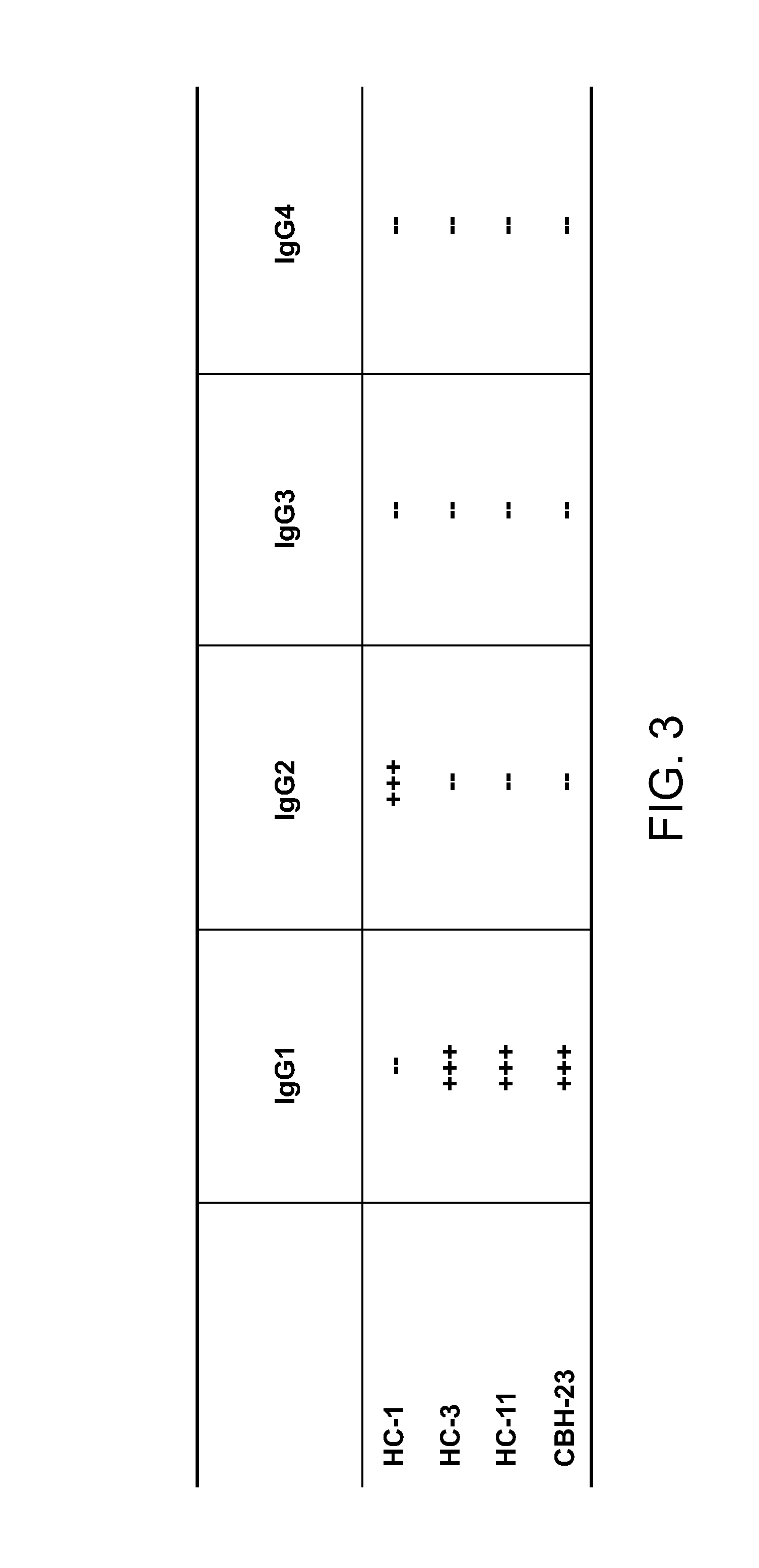Hepatitis c antibodies and uses thereof
a technology antibodies, applied in the field of hepatitis c antibodies, can solve the problems of high treatment cost, and achieve the effect of reducing the viral load of infected individuals
- Summary
- Abstract
- Description
- Claims
- Application Information
AI Technical Summary
Benefits of technology
Problems solved by technology
Method used
Image
Examples
example 1
Definition of a Conserved Immunodominant Domain on HCV E2 Glycoprotein by Neutralizing Human Monoclonal Antibodies
Materials and Methods
Cells and Culture Conditions
[0225]293T and CHO-K1 cells were obtained from ATCC. Huh7 cells were obtained from Dr. Michael Lai (University of Southern California) and Huh7.5 cells were obtained from Dr. Charles Rice (Rockefeller University). Cells were grown in Dulbecco's modified minimal essential medium (DMEM, Invitrogen, Carlsbad, Calif.) supplemented with 10% fetal calf serum (FCS, Sigma-Aldrich Co. St. Louis, Mo.) and 2 mM glutamine. CHO-K1 cells were grown in F-12 Kaighn's medium (Invitrogen 21127-022) containing L-glutamine and supplemented with 10% FCS.
Viruses and Virus Models
[0226]Production and purification of HCVpp (genotype 1a) have been previously described (Bartosch et al., 2003, J. Exp. Med., 197:633-42; and Keck et al., 2005, J. Virol., 79:13199-208; both of which are incorporated herein by reference). Briefly, 293T cells were transfe...
example 3
Antibody Production
[0268]The following Example provides a method that can be utilized to produce HCV monoclonal antibodies.
Expression and Purification of Antibody from a Plasmid Vector
[0269]A gene encoding an entire antibody molecule can be amplified from its parent hybridoma by RT-PCT and cloned into a heterologous expression cassette capable of driving expression of the antibody in a constitutive or inducible manner in a eukaryotic cell line. For example, antibody genes can be expressed in an expression plasmid such as pcDNA3.1 Zeo, pIND(SP1), pREP8, (all from Invitrogen, Carlsbad, Calif.), and / or other expression vectors. Alternatively or additionally, antibody genes can be expressed via viral or retroviral vectors such as MLV based vectors, vaccinia virus-based vectors, and / or Adenovirus-based vectors. Similarly, antibody genes can be expressed in insect virus vectors such as baculovirus vectors. Other vectors, such as the pCOMB series of vectors allow for expression of an antib...
PUM
| Property | Measurement | Unit |
|---|---|---|
| concentrations | aaaaa | aaaaa |
| time | aaaaa | aaaaa |
| time | aaaaa | aaaaa |
Abstract
Description
Claims
Application Information
 Login to View More
Login to View More - R&D
- Intellectual Property
- Life Sciences
- Materials
- Tech Scout
- Unparalleled Data Quality
- Higher Quality Content
- 60% Fewer Hallucinations
Browse by: Latest US Patents, China's latest patents, Technical Efficacy Thesaurus, Application Domain, Technology Topic, Popular Technical Reports.
© 2025 PatSnap. All rights reserved.Legal|Privacy policy|Modern Slavery Act Transparency Statement|Sitemap|About US| Contact US: help@patsnap.com



